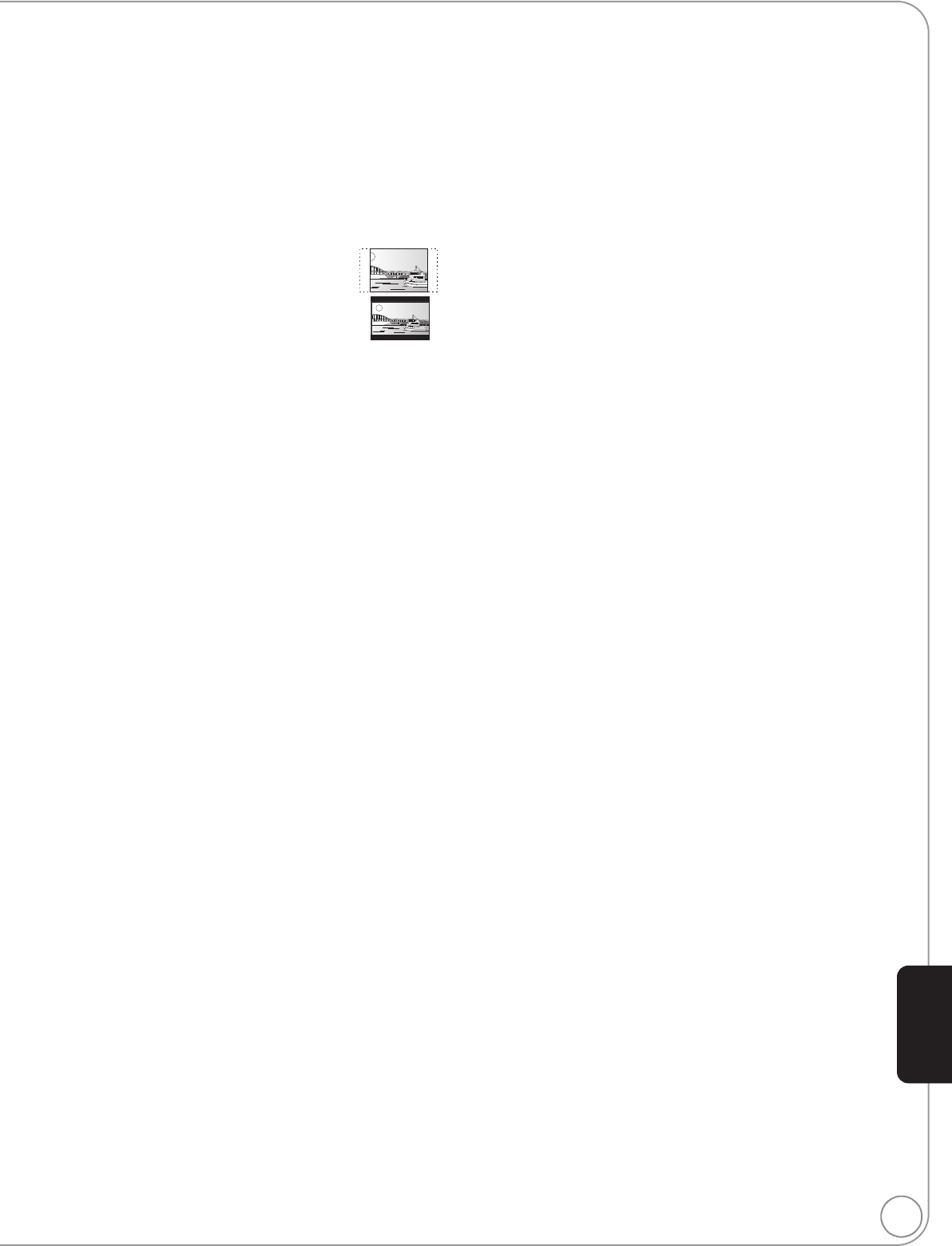
RQT9243 or RQT9350
47
P4HD (Pixel Precision Progressive Processing for HD)
This is a processor which makes use of an exclusive Panasonic
algorithm. Various processing is supported, including a high-level
conversion of the TV scanning format from interlace to progressive
and a high-level conversion of standard resolution (480i or 576i)
video signal to a 1080 High Definition video signal.
Consequently, this unit is able to provide video of optimal resolution
to the connected TV.
Pan&Scan/Letterbox
In general, DVD-Video are produced with the intention that they be
viewed on a widescreen television (16:9 aspect ratio), so images
often don’t fit regular (4:3 aspect ratio) televisions. Two styles of
picture, “Pan & Scan” and “Letterbox”, deal with this problem.
Pan&Scan:The sides are cut off so the picture fills
the screen.
Letterbox: Black bands appear at the top and bottom
of the picture so the picture itself appears
in an aspect ratio of 16:9.
PCM (Pulse Code Modulation)
This is one format for converting analog audio into digital audio,
enabling you to enjoy digital audio with no hassle.
Progressive/Interlace
The video signal standard of NTSC has 480 interlaced (i) scan lines,
whereas progressive (p) scanning uses twice the number of scan
lines, and this is referred to as 480p. Using progressive output, you
can enjoy watching high resolution video.
Router
Distinguishes the IP address assigned to each device, such as the
PC, and relays the flow of data within the network.
Sampling frequency
Sampling is the process of converting the heights of sound wave
(analog signal) samples taken at set periods into digits (digital
encoding). Sampling frequency is the number of samples taken per
second, so larger numbers mean more faithful reproduction of the
original sound.
Subnet mask
Enables efficient network use. A set of numbers which identify which
part of the IP address allocated to every device connected to the
router is the network portion.
x.v.Color
x.v.Color is a name for devices that are compatible with the xvYCC
format, an international standard for expanded color in motion
pictures, and that follow the rules for signal transmission.
You can enjoy vivid colors of wider color ranges for a more realistic
picture when connected to a TV that supports the x.v.Color with
HDMI cable.
1080i (1125i)
In one high definition image, 1080 (1125) alternating scan lines pass
to create an interlaced image. Because 1080i (1125i) more than
doubles current television broadcasts of 480i, the detail is much
clearer and creates a more realistic and rich image.
1080p (1125p)
In one high definition image, 1080 (1125) scan lines pass at the same
time to create a progressive image. Since progressive video does not
alternate scan lines like interlace, there is a minimal amount of
screen flicker.
24p
This is a progressive image recorded at a rate of 24 frames per
second.
720p (750p)
In one high definition image, 720 (750) scan lines pass at the same
time to create a progressive image. Since progressive video does not
alternate scan lines like interlace, there is a minimal amount of
screen flicker.
Reference
DMP-BD55_35PP-RQT9243_ENG.book 47 ページ 2008年8月29日 金曜日 午前10時28分


















